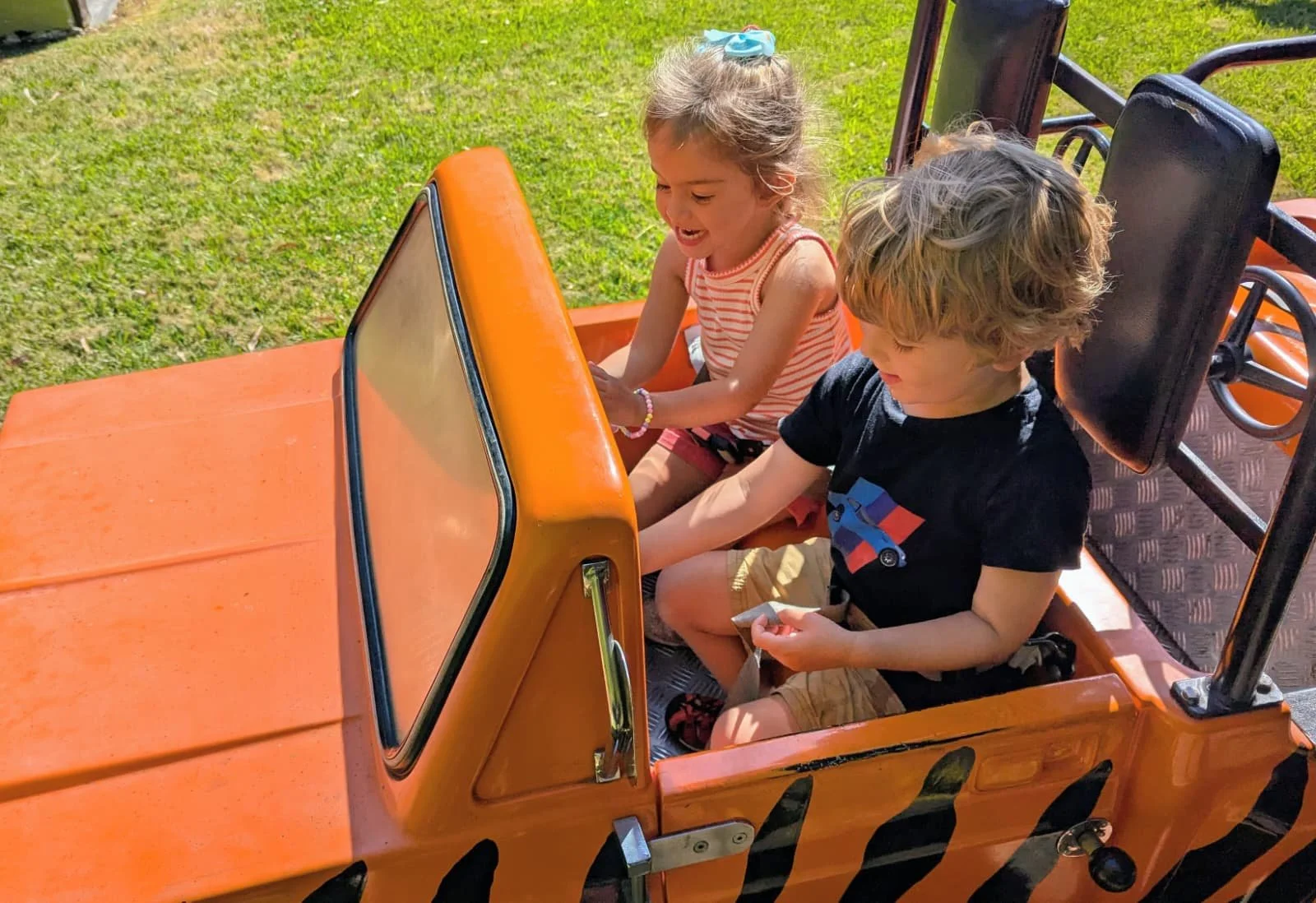The First Friendships
by Alexander Tidd
There’s something magical about watching your child make their first real friend. Not just parallel play in the sandbox or trading snacks at preschool, but an actual bond—two little humans choosing each other for reasons only they can fully understand. Maybe they both love dinosaurs. Maybe they share a fascination with shiny rocks. Or maybe they just happened to sit next to each other at circle time and decided, “Yep, this works.”
These first friendships are small but mighty. They’re the training ground for empathy, fairness, and cooperation—the social muscles kids will use for the rest of their lives. And while it can be hard for parents to resist hovering, the best thing we can often do is watch, listen, and let these early relationships unfold.
For the first few years of life, kids play next to each other more than with each other. That’s called parallel play, and it’s an important step. Around age three or four, something shifts. Kids begin noticing what others are doing and realize that playing together can be more fun than playing alone. Suddenly, they start forming real bonds—with actual preferences.
These early friendships are usually built on simple connections. Shared toys, favorite games, or even just proximity can spark a friendship that feels monumental in a child’s world. You might hear things like, “Ella is my best friend forever!” on Monday, followed by “I don’t like Ella anymore” on Tuesday. Don’t panic. This is normal. Preschool friendships are fluid because kids are still learning emotional boundaries and problem-solving.
To them, “best friend” doesn’t mean lifelong loyalty. It means “the person who shared their Play-Doh today.” And that’s okay—it’s how they learn what friendship feels like.
What Early Friendships Teach Kids
Friendships are where kids practice empathy in real time. When your child comforts a crying playmate or apologizes for grabbing a toy, they’re learning to see the world through someone else’s eyes. These small moments build the foundation for emotional intelligence.
They also teach fairness and negotiation. Who gets the red truck first? How do we take turns on the slide? Preschoolers are discovering that other people have wants too, and that compromise is part of getting along. Sometimes that looks messy—there will be yelling, crying, and maybe a toy tossed in frustration—but those conflicts are lessons in disguise.
Even the heartbreak of being left out teaches resilience. When parents step in with empathy and gentle guidance, kids learn that friendships can weather bumps and that feelings can heal.
When to Step In and When to Stay Out
Parents want to protect their kids, especially when friendships go sideways. Maybe another child is bossy, or your child suddenly gets excluded from a group. It’s natural to want to intervene—but knowing when to step in is an art.
If the conflict is physical or truly harmful, yes, step in. Kids need to know that hitting or bullying isn’t acceptable. But if it’s the usual “I don’t want to play with you today” type of hurt, try coaching from the sidelines instead of directing the play.
You can say, “That must have hurt your feelings. What could you do next time?” or “Do you think your friend was tired today?” These kinds of questions help kids process emotions without painting other children as villains. It also teaches them to navigate social ups and downs on their own—an essential skill for later life.
Here’s the tricky part: parents often get emotionally invested in their kids’ friendships. We cheer when they click with another child, then quietly bristle when that same friend starts excluding them. But our kids’ relationships aren’t extensions of ours. They’re laboratories for learning.
Letting kids manage their friendships—within safe limits—shows trust. It sends the message that you believe in their ability to make and repair connections. That doesn’t mean ignoring their pain, but it does mean resisting the urge to text another parent every time there’s a preschool spat. Kids need space to practice the social skills we’re teaching them.
Helping Friendships Grow
If your child struggles to make friends, start small. Set up short, low-pressure playdates with one other child at a time. Shared activities like playground trips or craft projects help ease awkwardness.
Model kindness and inclusion yourself. Kids watch how we talk about friends, neighbors, and even strangers. If they see you greet people warmly and show patience, they’ll mirror that behavior.
And remember, kids develop social skills at different rates. Some jump into friendships right away, while others take time to warm up. What matters is consistency—giving them opportunities to connect and room to figure out what friendship means to them.
The first friendships aren’t about lifelong loyalty or dramatic playground alliances. They’re about learning how to share space, feelings, and fun. They teach empathy, patience, and resilience—all while giving kids their first taste of independence.
Parents don’t need to choreograph these relationships. The best thing we can do is stand nearby with open ears, gentle words, and maybe a snack for backup.
Because as much as these early friendships shape our kids, they also remind us of something important: connection, at any age, starts small—and grows best when it’s given the freedom to unfold naturally.
